What Is the Heart of Jesus Plant? Is It Hard to Care for One?
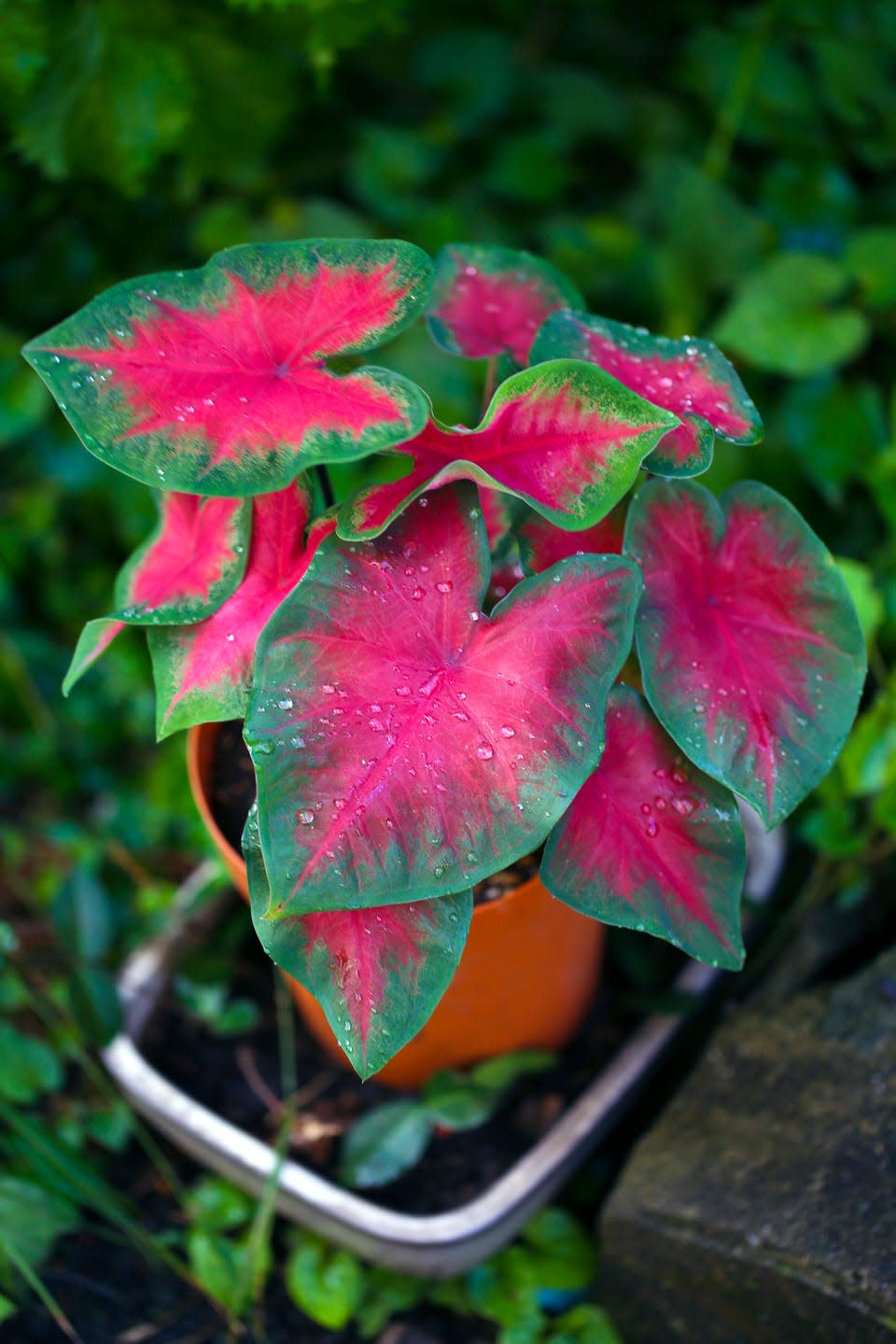
Caladiums are stunning plants for providing brilliant color in shade gardens. With huge heart-shaped leaves in red, pink, white, and green, their bright, long-lasting foliage makes them a lovely addition to landscape beds and borders.
You can also used them as an accent plant in containers, or grow them as houseplants, although they will go dormant for part of the year.
Native to Central and South America, these plants are grown from tubers. They love heat and humidity but don’t do well in direct sunlight. However, a little morning sun or dappled shade under large trees will develop their best colors.
You’ll find both fancy-leaf caladiums, which have large heart-shaped leaves, and lance-leaf types with semi heart-shaped leaves on long petioles, which come from the base of the plant.
Caladiums are perennial in USDA zones 9 to 10, but the tubers can be dug up in cold climates before the first frost and saved for replanting next spring. (Find your zone here. Note that the zone map has recently changed!)
However, this can be an iffy process, so many gardeners simply treat themselves to new tubers every year, much as you would do with flowering bulbs such as tulips. This will ensure the most reliable performance.
Although you can find caladiums at big box retailers, ordering from an online nursery is often a better choice to ensure you get large tubers. This is a case of bigger is better! Large tubers will grow into larger, fuller plants with more foliage.
Why Trust Us?
I'm a garden writer with more than 15 years of experience growing houseplants, herbs and edibles, and landscape plantings. My houseplant collection includes more than 60+ plants, while my expansive garden includes new annuals, perennials and shrubs that I trial for performance and reliability. I also test home and garden products to evaluate practicality and durability.
Caladium Basic Info:
Common Name: Caladium, heart of Jesus plant, angels wings
Botanical Name: Caladium spp
Plant Family: Araceae
Type of Plant: Annual, perennial in USDA zones 9 to 10
Native Origin: Central and South America
Sun Exposure: Part to full shade
Mature Size: 12 to 30 inches tall
Toxic to pets: Yes
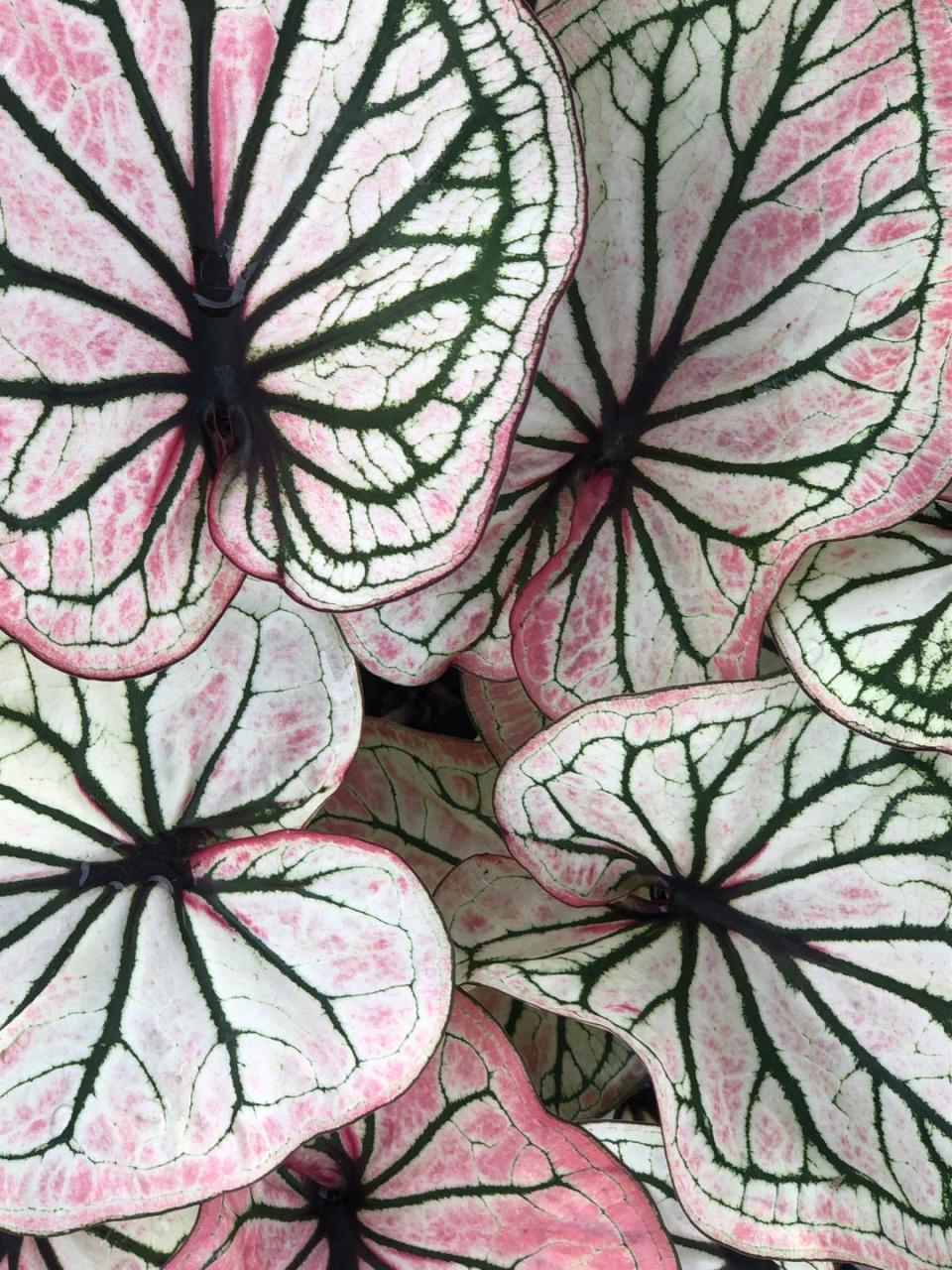
How to Grow Caladiums Outdoors
Caladium tubers should be planted in ground or in containers when warm weather arrives.
If you plant too soon, they tend to grow slowly or to rot. Wait until the soil temperature is around 70°F, which is often around early to mid-June in colder climates. You can give them a head start by planting in pots indoors about 4 to 6 weeks before the last expected frost in your area.
Plant them about 6 inches apart in northern climates. Because they’ll grow more quickly in southern regions, you can give them a bit more space between tubers. Plant the tubers smooth side down and knobby side up, about 2 inches deep.
If you want to encourage a full plant, many caladium growers suggest de-eyeing, which means digging out the most prominent “eye” or two, which looks like a little bump on the tuber (much like an eye on a potato). Use a garden or utility knife. You don’t have to do this step, if it makes you nervous, but it does stimulate the plant to push more foliage growth.
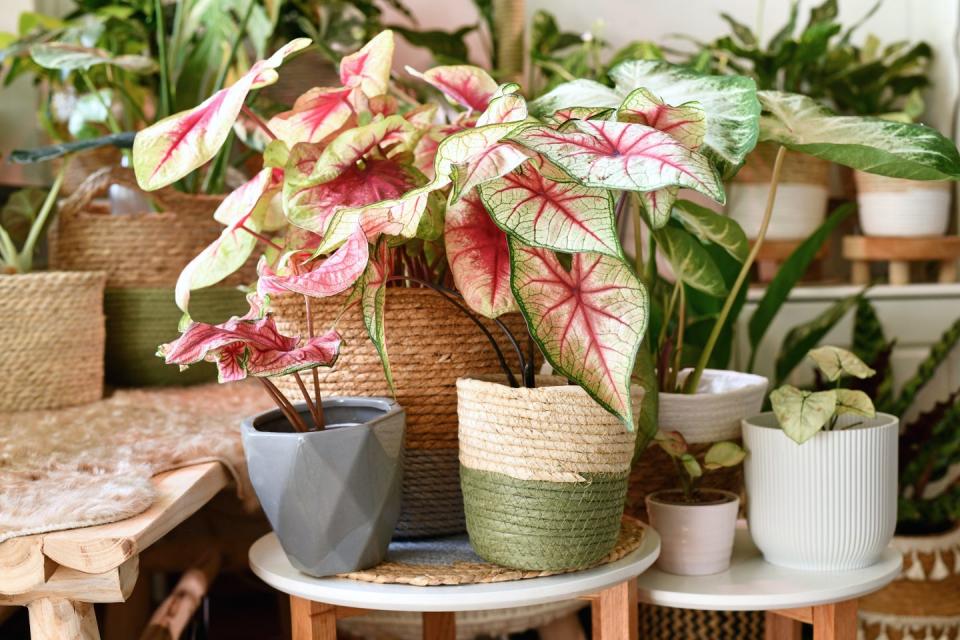
How to Grow Caladiums Indoors
You can grow caladiums indoors, too. Give them bright, indirect light near a sunny window, but make sure they’re not getting direct sunlight. Water to keep the soil slightly moist. When the plant goes dormant (the leaves droop and wither) in late fall, water occasionally, about every 2 to 3 weeks. Then start watering normally again in the spring.
Light
Caladiums need mostly shade but will develop their best coloring with a little morning sun. They’ll also do fine in dappled shade, but avoid direct sunlight, which will cause the foliage to fade.
Soil
Caladiums prefer rich, well-draining soil. If your soil is clay or stays soggy, consider planting in a pot; use any good potting mix.
Fertilizer
Caladiums benefit from regular fertilizing. Fertilize container plants every two weeks with a water soluble fertilizer, or use a granular slow-release fertilizer at the beginning of the season for plantings in landscape beds.
Water
Caladiums like to stay slightly moist, not soaking wet. If you live somewhere they can overwinter in ground, cut back on watering when they go dormant in the fall.
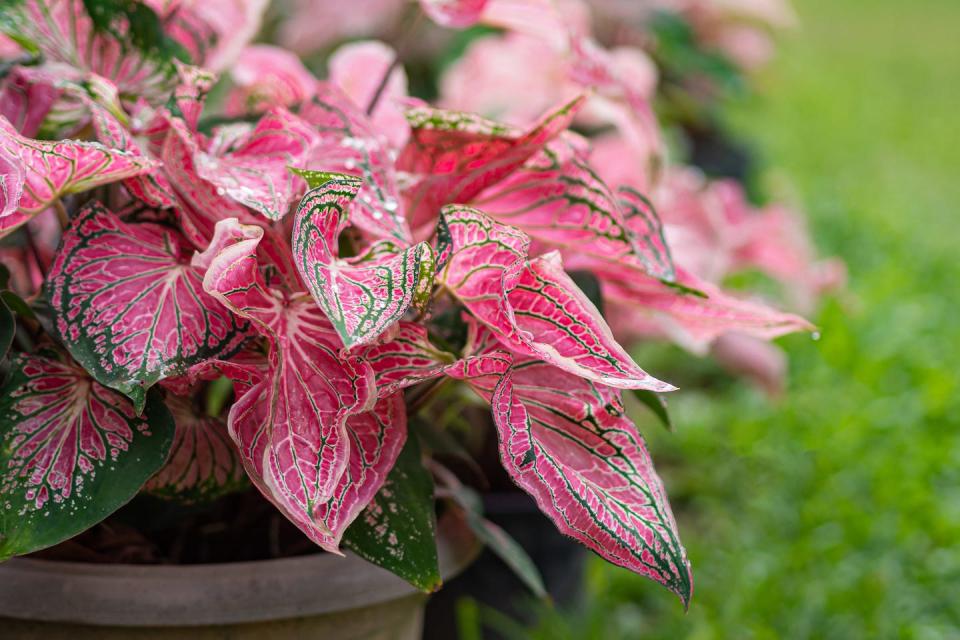
Types of Caladiums
There are thousands of named cultivars, or cultivated varieties, of caladiums. Some of our favorites include:
‘Carolyn Whorton’ has pink leaves, red veins and green margins; reaches 18 to 30 inches tall
‘White Christmas’ is an old favorite with white leaves and green margins; it gets 12 to 24 inches tall
‘Red Flash’ is dark red with pink spots and green margins; it has better sun tolerance than other types and reaches 18 to 30 inches tall
‘Bold N Beautiful’ has coral-colored leaves with a green border in spring. Later developing leaves are white with coral-colored veins; it can take more sun than some types, and it reaches 15 to 20 inches tall.
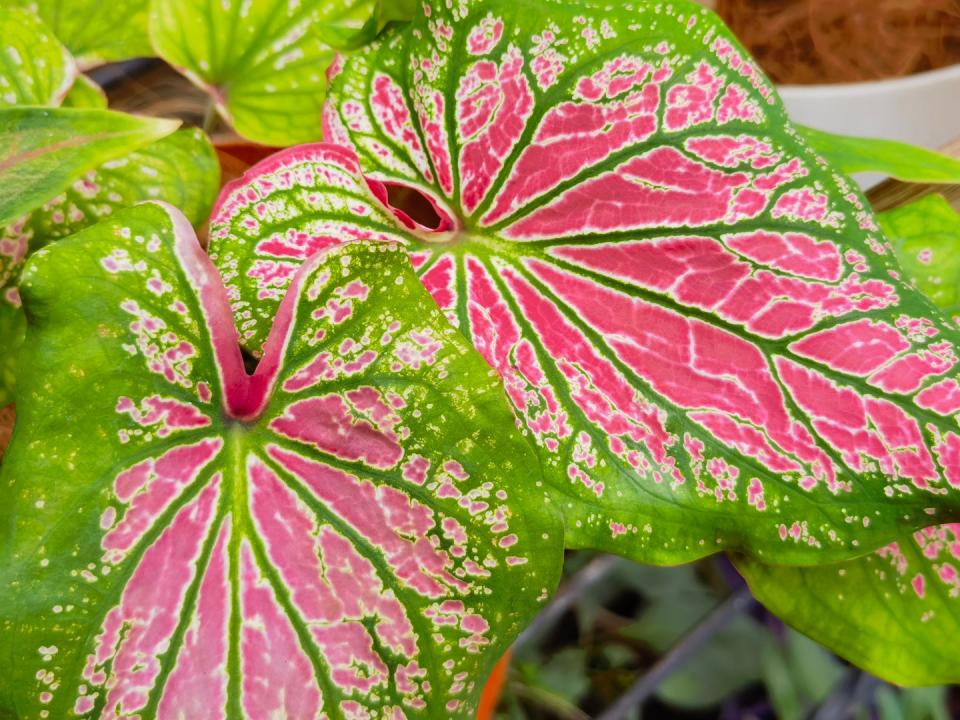
Pruning Caladiums
It’s not necessary to prune caladiums, but you can remove faded or yellowing leaves at any time during the growing season by snipping them off at the base of the plant.
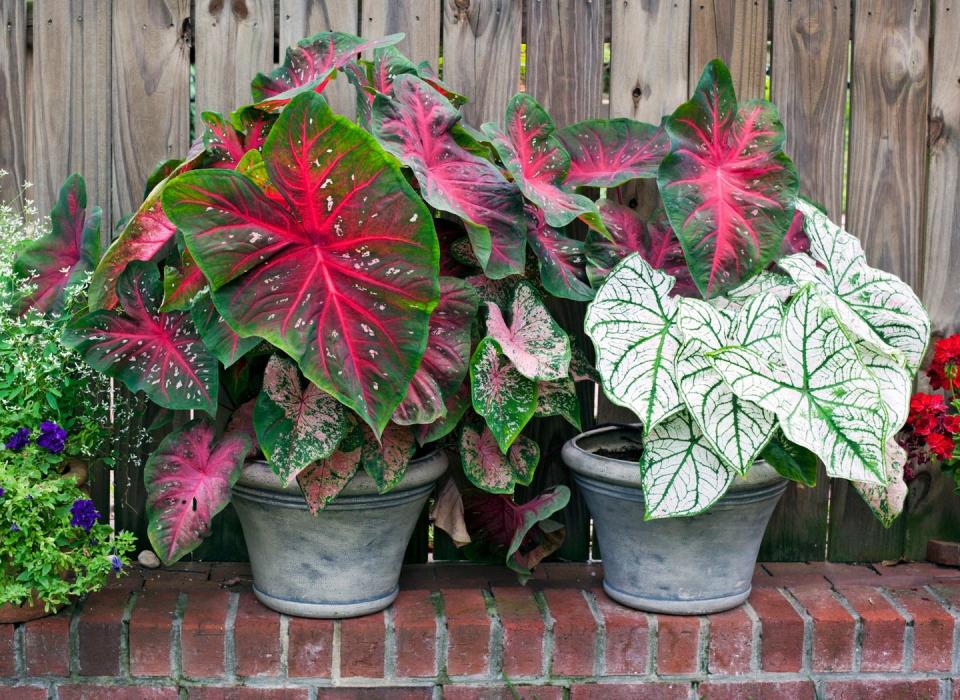
Overwintering Caladiums
Caladiums will survive the winter in USDA zones 9 to 10. They will enter dormancy in late summer to early fall, with the leaves drooping and withering. Leave the tubers in place in your garden. As long as it doesn’t freeze, your plants will show off again next summer.
In the rest of the country, if you plan to save the tubers for next year, dig them up before soil temperatures drop into the 50s. Leave some foliage attached so you know what variety it is.
Let them dry for a week in a warm-ish, dry area (but not in direct sun), then remove the leaves, label and store the tubers in mesh bags or dry peat moss, but don’t let them touch. Keep them in a cool, dark spot that doesn’t freeze, and replant in spring.
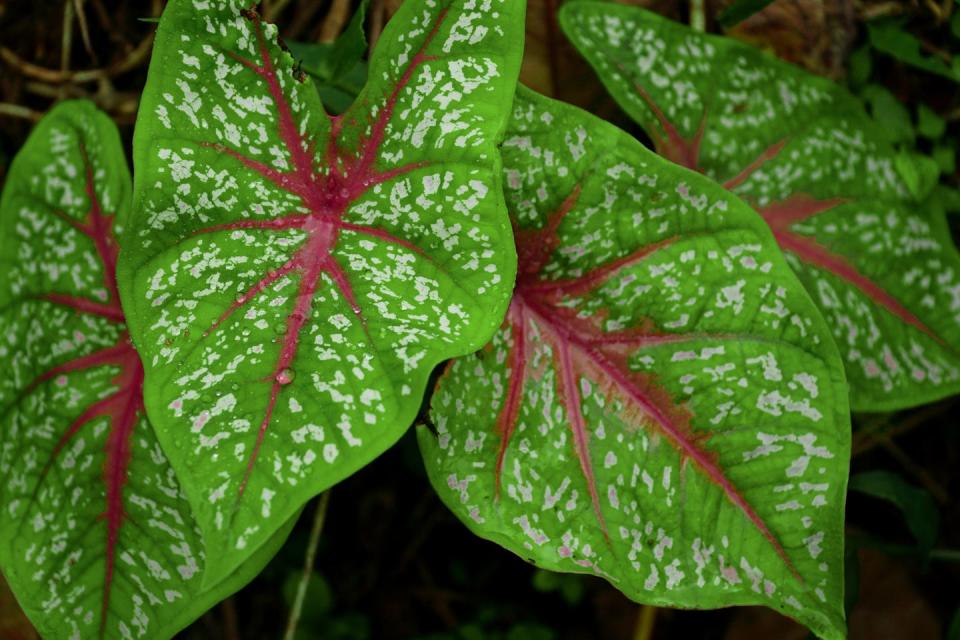
Common Problems with Caladiums
During the growing season, caladiums have few problems.
The biggest challenge is overwintering the tubers, which have a tendency to rot if not stored properly. Also, the second year’s show often isn’t that impressive, which is another reason to buy fresh bulbs every year. They’re not super-expensive, so you can treat yourself to a new variety in the spring.
Older leaves also tend to burn if fertilizer contacts them, so be careful about applying water soluble types or use a slow-release granular fertilizer that won’t touch the leaves.
Large leaves are sometimes damaged by wind, so plant them in a protected spot.
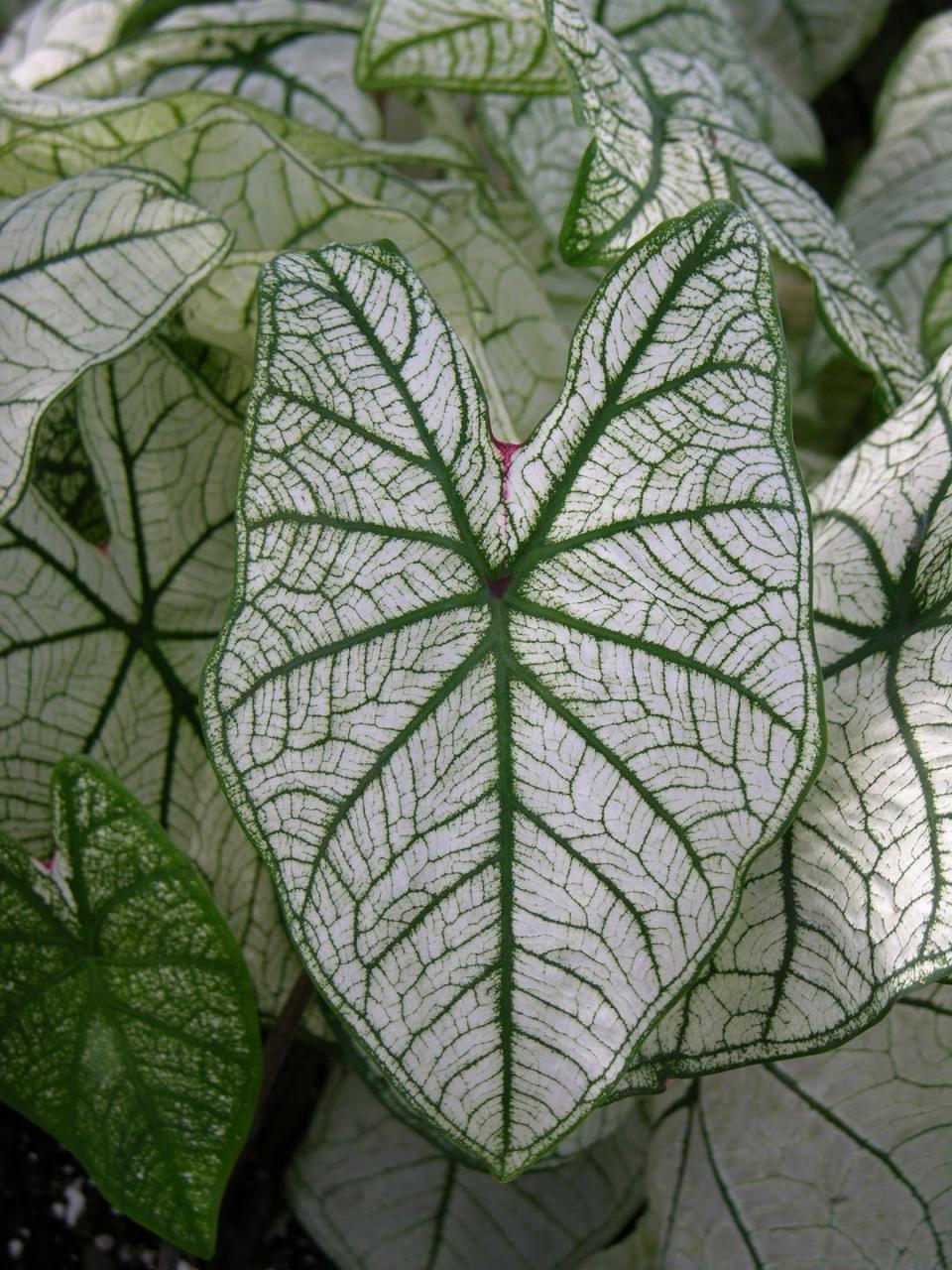
Are Caladiums Toxic to Pets?
Unfortunately, caladiums are toxic to pets, according to the ASPCA.
They contain insoluble calcium oxalates which causes pain and swelling of the mouth, tongue and lips; drooling; vomiting and difficulty swallowing.
Keep this plant away from pets. If you suspect they have ingested any—even if you’re not sure—call your vet immediately. It’s always better to be safe than sorry!
You Might Also Like


